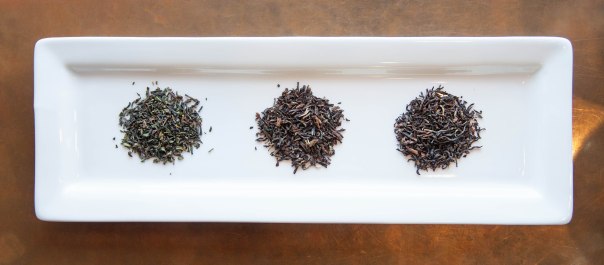Up into the 19th century, tea plants and the tea trade belonged to China. But the demand for tea was rapidly growing in the west and so were the pressures with the East. Because the Chinese had a monopoly on tea and little interest in European goods, they could demand to be paid in silver, causing the British to run significant trade deficits (an issue America and China are grappling with today).
To reverse the flow of silver back home, the British began selling large amounts of cheap opium (grown in India) to China. Furious at the British for turning their country into opium addicts (and depriving them of silver), the Chinese began confiscating and destroying the British opium supplies. The British retaliated with military force and fought what we now refer to as the first "opium war" of 1839-1842.
While these tensions were escalating, the British discovered an indigenous tea plant (camellia sinensis var. Assamica) growing in India. This was of no significance to the rest of the world until a couple employees of the East India Company began a project to start cultivating these wild tea plants in Assam.
Motivated to find a commercial alternative to Chinese tea, the British had already been experimenting with growing tea in India. The lack of experience and infrastructure (Assam was an undeveloped jungle at the time) prevented any real success up to this point, but these Assam tea plants proved well suited for the warmer climates of India. Through the stubborn persistence of the British (none of this came easy and often ended tragically) and help from imported Chinese knowledge and labor, the cultivation of tea in India became viable – and the proliferation of the Assam plant grew it to the size it is today. As the modern Indian tea industry established, three "official" geographically recognized tea producing regions emerged: Assam, Darjeeling, and Nilgiri.
Assam
The home to India’s native tea plant, Assam was a jungle surrounding the Brahmaputra River valley in east India. It currently produces over 50% of India’s total tea output and Assam teas are noted for being strong, full-bodied, with malty flavors. The indigenous Assamica plant prefers the warm, lush environment of its home and can stay productive most of the year, though 2nd flush teas are often considered the best. CTC teas are common in Assam. CTC, or "crush, tear, curl," teas are machine processed versus orthodox manufacturing. But fine orthodox teas are still available and range from their traditional deep, malty cups to sweet, almost tobacco-like flavors, similar to Yunnan teas (which is not surprising since the cultivars are similar and nearby on the map).
Darjeeling
This famous tea produced at the foothills of the Himalayas in Northern India is not only unique among Indian teas, but distinguishes itself from teas grown anywhere else in the world. The British started coming to these picturesque mountains for relaxation and recuperation – the high mountain air was considered healthy and cleansing. But the high altitudes, cooler weather, and well-drained soil proved to be perfect for growing tea – particularly the Chinese tea plant, which prefers this climate over the tropical weather of Assam and Nilgiri. Darjeeling teas are known to steep up light, floral, fresh, and sometimes astringent. They also market the significant seasonal contrasts produced between the first and second flushes. (For more, read our blog post "I’m dealing Darjeeling" )
Nilgiri (South India)
The teas of the "Blue Mountains" of Southern India are often overshadowed by the Darjeeling and Assam, but no less important to the story of India tea. Because of the tropical environment, Nilgiri plants (primarily the Assamica variety) will flush year round and are not separated by "flushes" like Assam and Darjeeling teas. Known for their smooth, fruity, gentle nature, the best orthodox teas from Nilgiri happen in the winter months of January and February, where sometimes even a little frostbite from the highest elevations can add unique and desirable complexity to the cup.
The above is not comprehensive. There are many details to fill in, many exceptions, and still much to learn. As always, the best way to learn is to taste them, and read more.
-Michael Lannier
TeaSource manager






Comments
I love learning about the history of tea. Great read.
Thanks! This is so informative. I had no idea about ‘opium wars’. Fascinating stuff!
Great article that summarizes a lot of fascinating history, and describes the varying regions and their teas very well too.